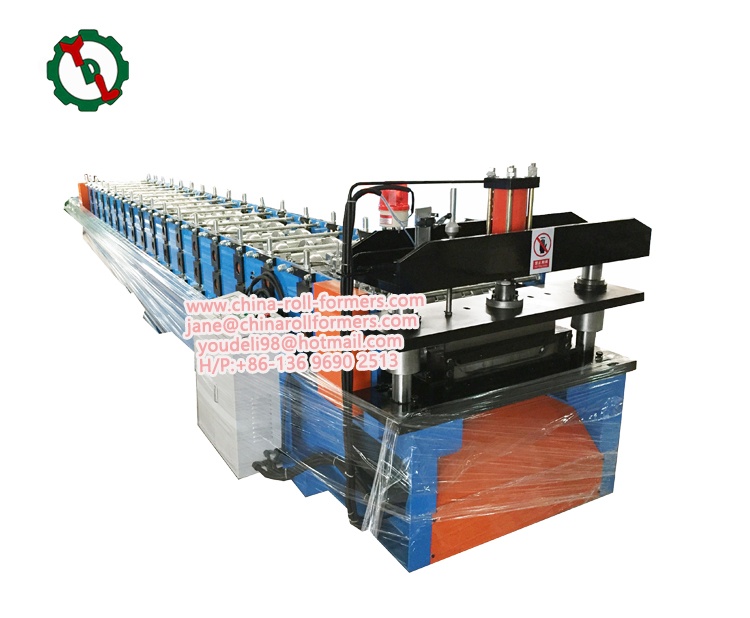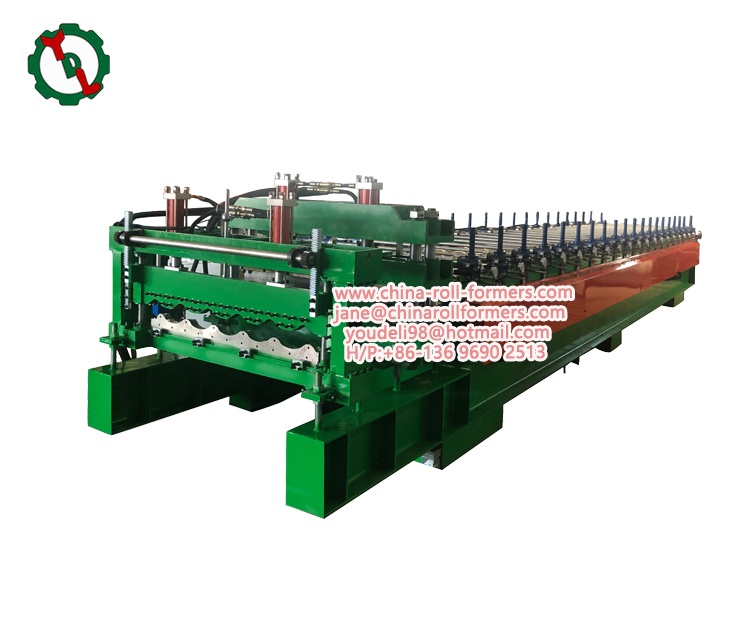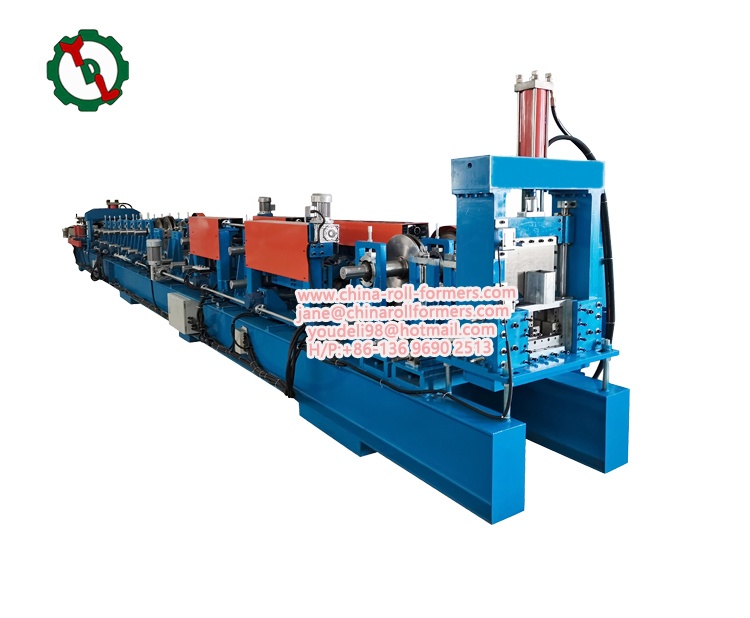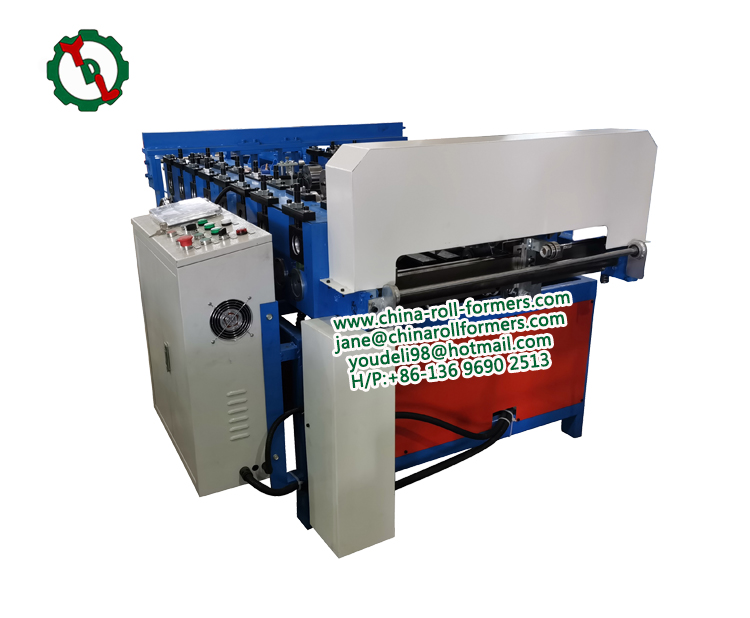In the realm of modern manufacturing, precision and efficiency are paramount. C channels, also known as C beams, play a crucial role in various industries, serving as structural components with applications ranging from construction to machinery. The process of creating these essential elements involves the utilization of specialized machinery, particularly C channel making machines. In this comprehensive guide, we will delve into the intricate workings of a C-type steel channel forming machine, exploring the key processes, components, and applications that define its functionality.
I. Introduction to C Channel Making Machines:
C-type steel channel forming machines are automated devices designed to transform raw materials, typically metal coils, into C-shaped profiles with consistent dimensions. These machines are a fundamental part of the roll forming process, a widely adopted method in the manufacturing industry for shaping metals into desired cross-sectional profiles.
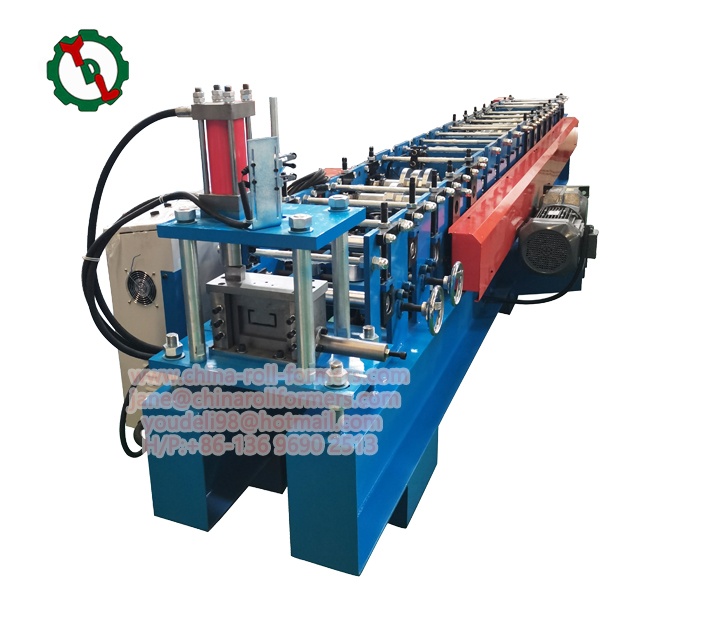
II. Key Components of a C Channel Making Machine:
- Decoiler:
The process begins with a decoiler, a component responsible for holding and releasing the metal coil. The decoiler unwinds the coil, providing a continuous feed of material for the subsequent stages.
- Leveling and Feeding System:
Once the metal strip is unwound, it passes through a leveling system that ensures uniformity and flatness. The feeding system then accurately moves the metal strip into the forming machine.
- Roll Forming Unit:
The heart of the C channel making machine is the roll forming unit. This unit consists of a series of precisely designed rollers positioned along the metal strip’s path. These rollers gradually shape the flat strip into the desired C-shaped profile through a sequence of bending and forming operations.
- Cutting System:
Following the roll forming process, the continuous C-shaped profile needs to be cut into individual lengths. The cutting system, often equipped with blades or shears, ensures precise and clean cuts, finalizing the production of individual C channels.
- Control System:
An integral part of any modern machinery, the control system governs and coordinates the entire C channel making machine. It allows operators to input parameters, monitor the production process, and make real-time adjustments as needed.
III. Working Principle of a C Channel Making Machine:
- Material Loading:
The process initiates with the loading of a metal coil onto the decoiler. This coil typically consists of galvanized steel, stainless steel, or other metals suitable for the intended application of the C channels.
- Leveling and Feeding:
The metal strip passes through the leveling system, which removes any distortions or unevenness in the material. The leveled strip is then accurately fed into the roll forming unit.
- Roll Forming:
As the metal strip enters the roll forming unit, it undergoes a series of bending and forming operations. The rollers are strategically positioned to gradually shape the flat strip into the distinct C-shaped profile.
- Cutting:
Once the continuous C profile is formed, the cutting system comes into play. It precisely cuts the continuous profile into individual C channels with the specified length.
- Stacking and Collection:
The final step involves stacking and collecting the produced C channels. Depending on the machine’s design, this can be an automated or manual process.
IV. Applications of C Channels:
C channels produced by these machines find applications in various industries, including but not limited to:
- Construction:
C channels are widely used in construction for structural applications, serving as essential components in building frameworks, roof trusses, and supports. The versatility of C channels makes them valuable for creating robust and durable structures.
- Automotive Industry:
In the automotive sector, C channels play a crucial role in the fabrication of vehicle frames and chassis. The use of C channels provides a balance of strength and weight, contributing to the overall structural integrity of automobiles.
- Machinery and Equipment Manufacturing:
C channels find extensive use in the manufacturing of machinery and equipment, where their structural properties make them suitable for creating frames, supports, and mounting structures.
- Electrical Enclosures:
The electrical industry benefits from C channels in the fabrication of enclosures and mounting solutions. C channels provide a reliable framework for housing electrical components and ensuring their secure installation.
- Storage Systems:
C channels are integral to the production of storage systems such as racks and shelving units. Their structural stability makes them well-suited for organizing and supporting loads in warehouses and storage facilities.
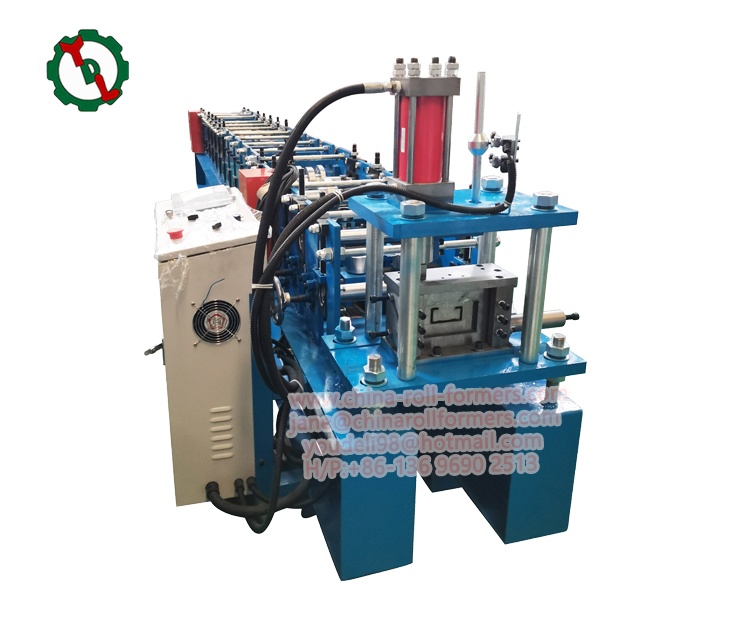
V. Advantages of Using C Channel Making Machines:
- High Precision:
C-type steel channel forming machines offer high precision in shaping metal strips, ensuring that the produced C channels meet precise dimensional specifications.
- Efficiency in Production:
These machines operate with efficiency, capable of continuous production with minimal downtime. The automated processes contribute to a streamlined and time-effective manufacturing workflow.
- Versatility in Materials:
C channel making machines can work with a variety of materials, including different metals and alloys. This versatility allows manufacturers to adapt to specific project requirements and material preferences.
- Customization Possibilities:
Manufacturers can easily adjust the parameters of C-type steel channel forming machines to produce C channels with varying dimensions and specifications. This flexibility enables customization to meet diverse industry needs.
- Cost-Effective Production:
The automated nature of C channel making machines leads to cost-effective production, reducing labor costs and increasing overall operational efficiency.
VI. Maintenance Considerations:
Maintaining a C channel making machine is essential to ensure its longevity and consistent performance. Regular maintenance tasks include:
- Lubrication:
Regularly lubricating moving parts, such as rollers and cutting blades, prevents friction-related wear and enhances the machine’s efficiency.
- Inspections:
Periodic inspections of the machine’s components help identify any signs of wear, damage, or misalignment. Prompt addressing of issues prevents more extensive damage and downtime.
- Cleaning:
Keeping the machine clean from accumulated debris and metal shavings contributes to its smooth operation and prevents interference with sensitive components.
- Software Updates:
If the C channel making machine includes a control system, ensuring that the software is up-to-date is crucial for optimal performance and incorporating any enhancements or bug fixes.
VII. Future Trends in C Channel Making Technology:
As technology continues to advance, the future of C channel making machines holds several potential trends:
- Integration of Smart Technologies:
Smart technologies, such as IoT (Internet of Things), may be integrated into C channel making machines for enhanced monitoring, diagnostics, and predictive maintenance.
- Advanced Material Compatibility:
Future machines may be designed to work with a broader range of materials, including advanced alloys and composite materials, expanding their applicability.
- Increased Automation:
Automation may become even more prevalent, with machines capable of self-adjustment based on real-time feedback, reducing the need for manual interventions.
- Energy Efficiency:
Advancements in energy-efficient technologies may lead to C-type steel channel forming machines with reduced energy consumption, contributing to sustainability in manufacturing.
VIII. Conclusion:
In conclusion, the functionality of a C channel making machine is a crucial aspect of modern manufacturing processes. These machines, with their intricate components and automated processes, contribute significantly to the production of C channels used across various industries. From construction to automotive applications, C channels play a vital role in creating robust and reliable structures. The advantages of using C-type steel channel forming machines, including precision, efficiency, and customization possibilities, make them indispensable in contemporary manufacturing. As technology continues to evolve, the future holds promising trends that may further enhance the capabilities and sustainability of C channel making machines, ensuring their continued relevance in the dynamic landscape of industrial production.


